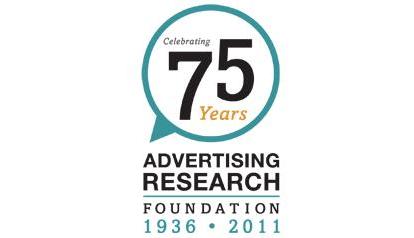ARF Interview with Thales Teixeira on "Viral Advertising via Ad Symbiosis: Self-Interested Sharing"

Marketers all want to make the next "viral" ad, but it's not that simple. What makes people share ads with friends? What characteristics do viral ads have in common? We had the chance to talk with Thales Teixeira, Marketing Professor at the Harvard School of Business. Professor Teixeira's work focuses on why people share and what content they're inclined to share.
ARF:Why do viewers share ads?
Thales Teixeira: Consumer sharing of ads, the basis of viral advertising, has turned out to be a very uncertain and complicated process. My research breaks down the ad sharing process into three sequential consumer behaviors necessary for an ad to be successfully shared online: attraction, retention and sharing. First, viewers can't avoid (e.g., skip) the ad. Second, they should watch the ad until the end. And third, conditional on viewing, they need to decide to share the ad with their acquaintances. My research explains the ad features that facilitate, though not guaranteeing, that an ad will 'survive' these three stages so as to be on track to disseminate virally online.
Initially, we thought that people share ads to connect to others, to provide their acquaintances with content that they think has value, in an altruistic manner. It turns out that most sharing is done for self-interested motives. In one way another, consciously or not, the sender intends to gain 'social capital' in the process. It is not just about content. To create successful viral ads, brands need to enlist the right consumers to do the distribution job. Brands need to ask the question, 'What's in it for them?' Providing desirable ad content (for example, novel humor), AND allowing them to gain social status in the process is the key to enlisting consumers to work on behalf of your brand. This 'symbiosis', wherein both senders and advertiser benefit, is what ads that have successfully gone viral have.
ARF: How can advertisers design to be sharable?
Teixeira:The tricky part is that just because a viewer may really like an ad, doesn't mean she is also likely to share it. In particular, I found that although shocking content and humor may get people to watch an ad privately, it often works against their desire to share the spot. Bud Light's "Clothing Drive" where the characters respond by removing clothes they're wearing garnered high viewership but it was not as widely shared as other Bud Light ads. Even the blacked-out nudity was too shocking. The solution: Surprise but don't shock.
ARF:Can you tell us about the effects of emotional delivery? Were there any surprises in your findings?
Teixeira: Using facial-tracking technology we've found that ads that produce stable emotional states generally aren't effective at engaging viewers for very long. The solution: Build an emotional roller coaster. Viewers are most likely to continue watching a video ad if they experience emotional ups and downs. This fits with psychological-research findings about human adaptability. When we come into a warm home on a cold winter day, or when we receive a pay raise, we experience pleasure, but the feeling is transitory; the novelty soon wears off. So advertisers need to briefly terminate viewers' feelings of joy or surprise and then quickly restore them, creating an emotional roller coaster—much the way a movie does. Surprisingly, giving the viewer the most amount of joy, surprise or other positive emotion in ads isn't the best way to hold their attention. Interrupting something good actually helps.
ARF:How can companies use these findings to develop ads?
Teixeira:Practically speaking, one clear means to develop better TV and online ads is to grab attention at the onset. Ads should evoke surprise followed by joyful or happy scenes, not the other way around, and alternate between high and low levels of joy. Entertaining the viewer first pays off to some extent. Using purely humor ads with the brand at the end is too high a price to pay with too little time left to persuade, the ultimate goal.
ARF:Why do viewers change the channel? What are views turn-offs and turn-ons?
Teixeira:Prominent branding puts off viewers. Using eye-tracking we discovered that viewers routinely focus on brand logos on-screen. This isn't the boon it might seem: The more prominent or intrusive the logo, the more likely viewers are to stop watching— even if they know and like the brand. Why? People seem to have an unconscious aversion to being persuaded, so when they see a logo, they resist. The solution: Utilize "brand pulsing." Smart advertising unobtrusively weaves the brand image throughout the ad. My experiments have shown that this can increase viewership by as much as 20%. One of the best examples of the technique is Coca-Cola's animated "Happiness Factory" ad. It depicts a fantasy version of what happens inside a Coke machine when someone inserts money. A Coke bottle is shown repeatedly, but each appearance is quick. So, if a primary goal is to get viewers to watch ads until the end, TV and online video ads should not show the brand logo too intrusively and should pulse it (on-off-on) whenever possible. One way to do this is to have the brand act as a hero in the story, as opposed to a persuading symbol. This technique also improves the ad's virality potential.
Want to hear more? Professor Teixeira will be speaking at the ARF Re:think 2012 Convention on Tuesday, March 27 at 11:50 am. Register now! You can also read his report.

